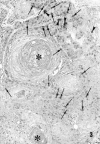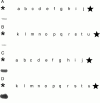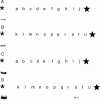Recent striking changes in histological differentiation and rate of human papillomavirus infection in squamous cell carcinoma of the lung in Okinawa, a subtropical island in southern Japan
- PMID: 11041057
- PMCID: PMC1731255
- DOI: 10.1136/jcp.53.9.676
Recent striking changes in histological differentiation and rate of human papillomavirus infection in squamous cell carcinoma of the lung in Okinawa, a subtropical island in southern Japan
Abstract
Aims: The incidence of lung cancer in Okinawa has been the highest in Japan since 1975, and squamous cell carcinoma (SCC), especially the well differentiated form, is the most prevalent form in Okinawa, although well differentiated SCC is relatively rare in mainland Japan. Furthermore, a high proportion of SCC of the lung in Okinawa was positive for human papillomavirus (HPV). In this study, we report recent striking changes in histological features and in the incidence of HPV infection.
Methods: In Okinawa between 1986 and 1998, 1109 surgically resected lung tumours were examined histopathologically. In addition, human papillomavirus infection was detected by the polymerase chain reaction and Southern blot analysis in SCC cases reported in 1993 and 1995-8. Non-isotopic in situ hybridisation of HPV DNA was also carried out.
Results: Up until 1994 SCC, especially the well differentiated form, was the most prevalent type of tumour. However, since 1995 the number of such cases has diminished steadily, accompanied by a slight rise in the incidence of adenocarcinoma. Although most present and past patients are heavy smokers, the incidence of SCC, especially the well differentiated form, continues to decrease steadily. Furthermore, in 1993, HPV was detected in 79% of all cases, and was particularly prevalent in the well differentiated form, but the rate fell to 68% in 1995, 35% in 1996, 23% in 1997, and 24% in 1998. The age distribution of patients, the male to female ratio, and the number of tumours overexpressing p53 protein did not change significantly over the study period, and thus did not correlate with changes in the differentiation of SCC.
Conclusions: The decreasing incidence of viral infection correlates strongly with the falling numbers of SCC cases, especially well differentiated cases. These findings suggest that HPV might be involved in the development of SCC of the lung, affecting the histological differentiation of SCC in particular, at least in Okinawa, a subtropical island in southern Japan.
Figures








References
MeSH terms
Substances
LinkOut - more resources
Full Text Sources
Medical
Research Materials
Miscellaneous
